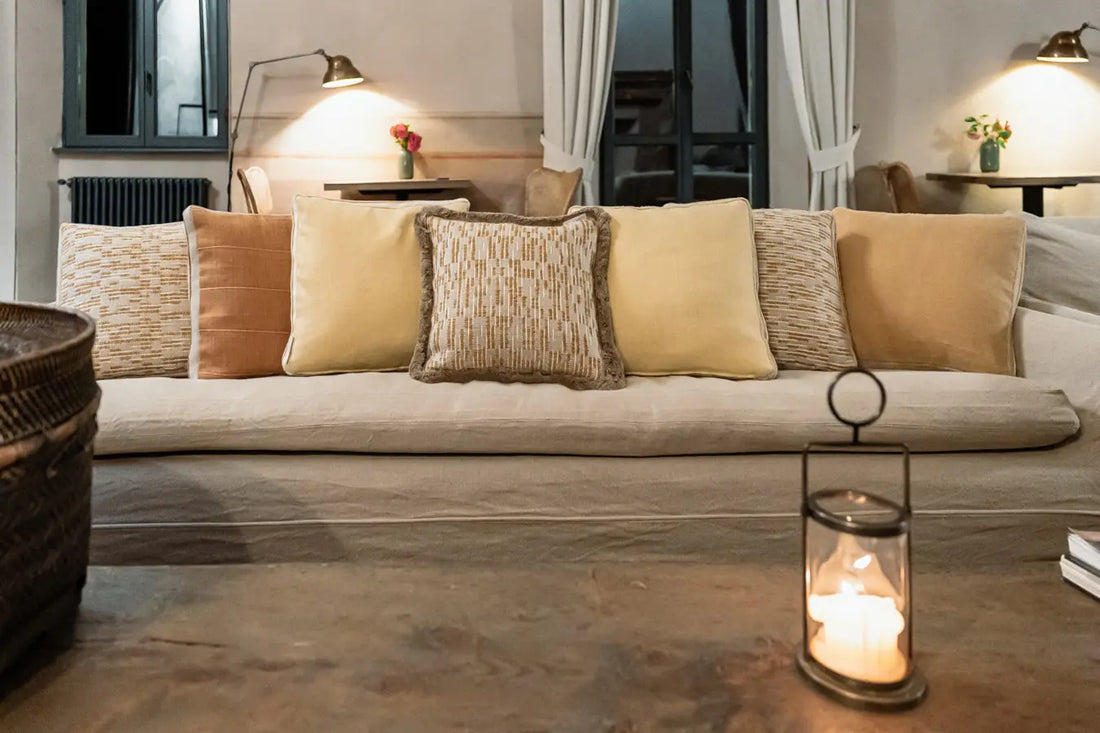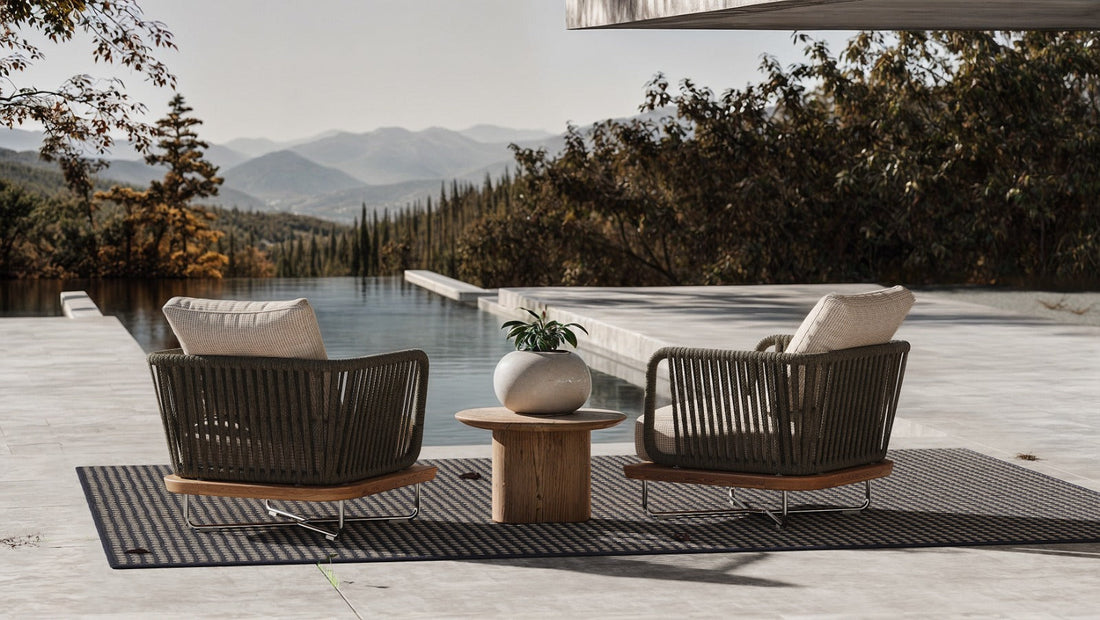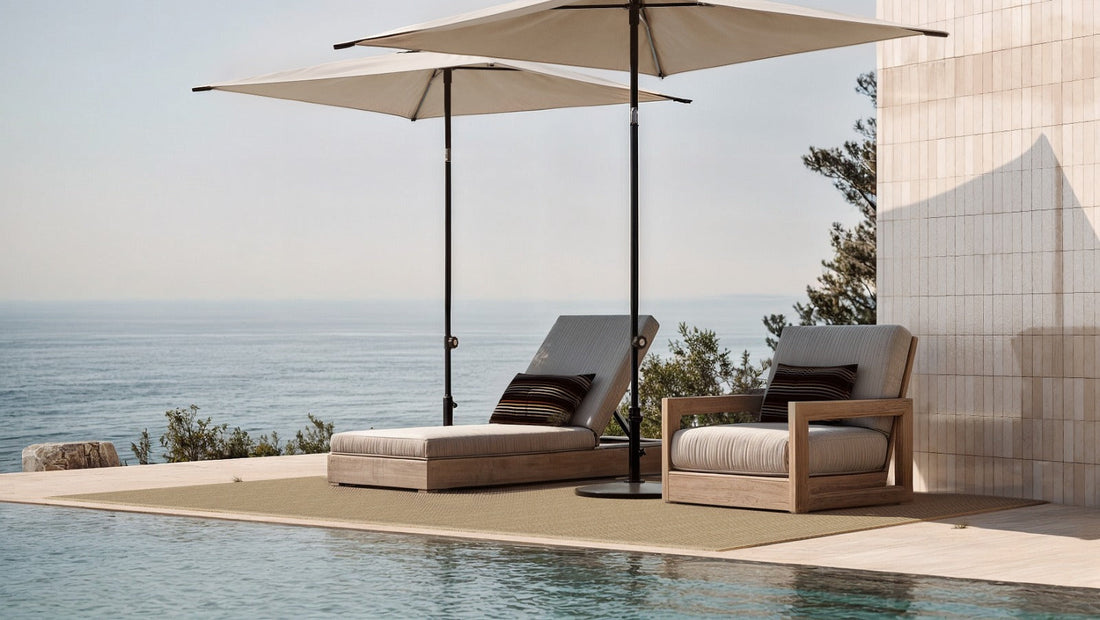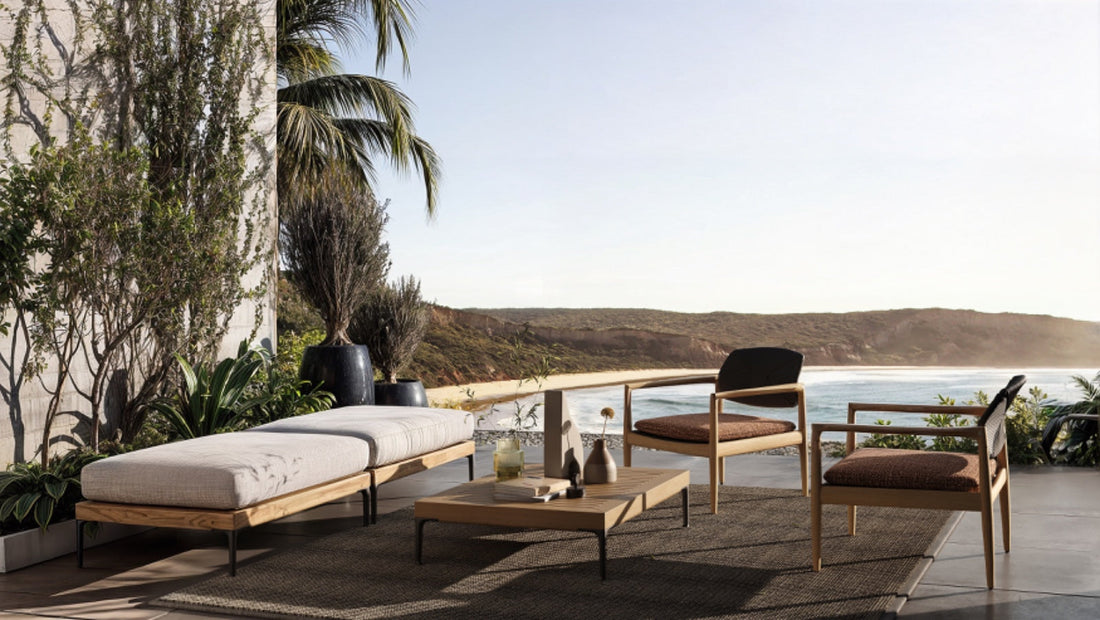Blog Martin Gabriel
Die Kunst des Layerings – mit Teppichen & Kissen stilvolle Outdoor-Welten gestalten
In der modernen Outdoor-Gestaltung reicht Funktion allein nicht mehr aus. Es geht darum, Außenräume zu schaffen, die in Stil, Komfort und Atmosphäre mit Innenräumen konkurrieren können.
Erfahren Sie mehrWie europäisches Design moderne Wohnräume prägt – zeitlose Eleganz mit Geschichte
Der Einfluss europäischen Designs ist bis heute spürbar – ob in historischen Villen, stilsicheren Stadtwohnungen oder modernen Outdoor-Lounges.
Erfahren Sie mehrSchweizer Ästhetik im Interior Design – Minimalismus mit Wärme & Substanz
Der Schweizer Einrichtungsstil ist bekannt für seine Zurückhaltung, Klarheit und handwerkliche Präzision – aber auch für eine warme, einladende Atmosphäre.
Erfahren Sie mehrNachhaltig einrichten: Warum Qualität bei Wohnaccessoires den Unterschied macht
Langlebig, gesund & schön: Warum hochwertige Wohntextilien und Designmöbel die bessere Wahl sind – für dich, dein Zuhause & die Umwelt.
Erfahren Sie mehrInterior Design Trends 2025 – Zeitlose Eleganz für moderne Wohnräume
Die wichtigsten Interior Design Trends 2025: Naturfarben, Nachhaltigkeit & zeitlose Eleganz. Für Wohnräume mit Atmosphäre & Zukunft.
Erfahren Sie mehr






